To obtain optimal results some executive rules are of fundamental importance. In particular, the preparation of the substrate, the mixing times of the products, the timing of the overlapping of the layers and the curing aids in the case of applications in hot/arid or particularly cold environments, rules that we can summarize as follows:
SURFACES PREPARATION
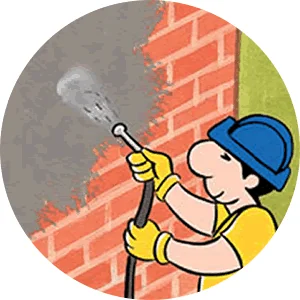
The surfaces of the walls on which the plaster will be made, both newly constructed and clean from plaster, (for restoration and/or maintenance work), must be cleaned, where possible with hydro-washing or sandblasting, to remove friable and incoherent parts, surface dust, soiling of any kind, etc. Any irregularities in planar continuity (accentuated height differences, cavities, pipe-crossing sites, etc.) must first be filled up with mortar carried out on site or with pre-mixed base coat, based on hydraulic lime, UNTERSANA by AZICHEM srl.
NOTE: The consistency and the correct degree of porosity of the resulting supports must be carefully checked to make sure that they are adequate to withstand the coatings. It is advisable to carry out the assessment both on dry surfaces and after having moistened them, to highlight any hidden defects.
PREPARATION OF THE REINFORCEMENT ARMOR ON THE CORNERS AND INSTALLATION OF THE EDGE PROTECTORS
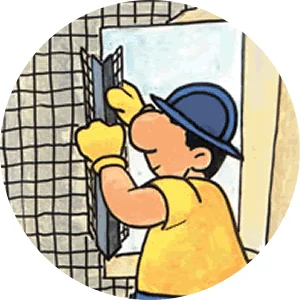
In correspondence with areas of a different nature than that of the original masonry: architraves, chimneys, structural elements, slabs, discontinuities, edges of doors and windows, etc., must be prepared an alkali-resistant fiberglass net approximatly of the weight of 160 gr/m² with square mesh grid (of opening adequate to the granulometry of the materials that will have to be applied), for example 4 x 4.5 mm, making sure to exceed by the edges about 20 cm per side, respect to the area to be reinforced (ARMAGLASS 160 by AZICHEM srl). The net will be interposed (“drowned”) in the pre-mixed mortar UNTERSANA by AZICHEM srl, based on hydraulic lime, which will then be applied, possibly using a smooth metal spatula, to “drown” it in the rendering coat.
NOTE: This type of reinforcement is necessary and does not replace the fiberglass or steel wire mesh grid, possibly provided for the entire surface. “The building envelope (rendering coat + Sanawarme + finishing) must be considered, for all intents and purposes, as a porous system and must be isolated in correspondence with the masonry foot from the possibility of taking water from localized and accidental outbreaks, by use of appropriate and adequate protection: bands of waterproof sheath or other material suitable for the purpose. Floors and pavements must have the correct slope to avoid unwanted accumulation.”
APPLICATION OF GRIPPING RENDERING COAT
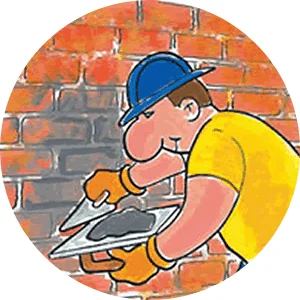
On the walls prepared as described above and after having wet the surface with water, to simplify the application and the adhesion of the subsequent thermal plaster, apply by spray, trying to obtain a surface that is as corrugated and baseas possible, the premixed rendering mortar based on hydraulic lime UNTERSANA by AZICHEM srl, for an approximate thickness of 3 – 4 mm (4 – 5 kg/m² of product), checking the coverage, as continuous as possible, of the surface to be plastered. On the rendering mortar surface prepare the thick bands and the corner guards in stainless steel, using for the thickness bands the thermal insulating plaster SANAWARME by AZICHEM srl, which will then constitute the actual thickness of the mineral coat, and for the corner protectors the fast setting hydraulic mortar SANAFIRM by AZICHEM srl.
APPLICATION OF INSULATING PLASTER
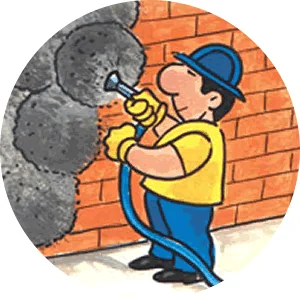
After about 24 hours from the application of the UNTERSANA baserendering coat, and in any case after hardening of the same, after having wet the surface to be plastered with water, apply manually or spray using a special plastering machine, the heat-insulating, dehumidifying plaster, hydraulic lime base, perlite and cork flours, SANAWARME by AZICHEM srl, for a consumption of about 6 kg/m²/cm. The layers of sprayed product must not exceed the thickness of 1.5 – 2 cm. Each subsequent layer must be applied after the previous one has hardened (from 24 to 48 hours apart, according to the temperature and seasonal climatic conditions) and after have wet with water the surfaces to be plastered.
NOTE: For plaster thicknesses greater than 4 – 5 cm, provide a galvanized electro-welded mesh (for example: 2 mm wire, 5 x 5 cm mesh), fixed with masonry dowels or a structural net in fiberglass, of equivalent performance. Use traditional plastering machines for premixed products (type PFT model G4 or similar), with the foresight to replace the standard mixer supplied with the specific one for light materials.
APPLICATION OF THE FINISHING LAYER
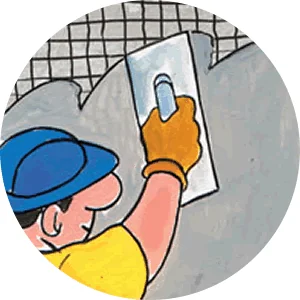
After at least 4 days from the application of SANAWARME thermal plaster, and in any case after the hardening of the surface and after having wet with water the surface, apply the hydraulic lime based finishing plaster SANASTOF by AZICHEM srl using a trowel, for a thickness of about 2 – 2.5 mm (consumption: 3 – 4 kg/m²), to homogenize and compensate the surfaces, previously plastered, from any planar inhomogeneities. In the SANASTOF layer, with the purpose of anti-cracking and best resistance to mechanical and/or atmospheric events, it is extremely important to interpose (“drown”) the alkaline-resistant fiberglass mesh grid ARMAGLASS 160 by AZICHEM srl, using, possibly, a smooth metal spatula.
APPLICATION OF BREATHABLE WATER REPELLENT PAINTING
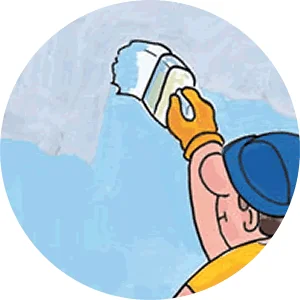
Once the SANASTOF finishing layer is ready (keeping it as wet as possible, especially in the summer or on hot and windy days) and when it reaches the correct alkalinity, apply the transpiring, protective, water-repellent siloxane paint PROTECH SIL-P by AZICHEM srl for a consumption of 0.25 – 0.30 l/m² (after specific PROTECH SIL-FIX primer by AZICHEM srl, for a consumption of 0.12 l/m²).
WARNINGS AND PRECAUTIONS
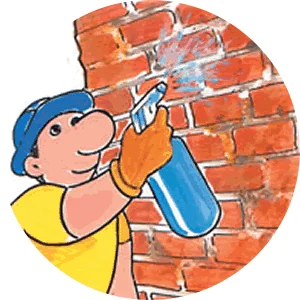
The processes described above must be carried out at an ambient temperature between + 6 ° and + 30 ° C.
Given the correct removal of degraded plaster, where existing, it is necessary, in the presence of salt deposits and efflorescence, to brush it and to apply by spray a suitable anti-saline treatment (SANAREG, FEST SALZ or DETERG-A by AZICHEM srl), according to the actual needs.
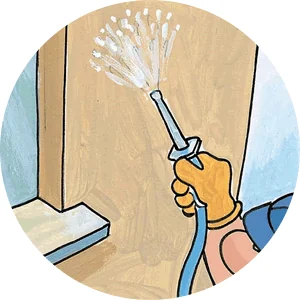
The fresh surfaces of the plaster laid in place (in the various layers: UNTERSANA basecoat, SANAWARME plaster and SANASTOF finish), must be protected from direct sunlight, rain and wind and must be treated by spraying with water prolonged.

In the event of foreseeable lengthening of the finishing times (painting or smoothing colored in thickness), with consequent long exposure to atmospheric events, it is advisable to consolidate the impregnating, hardening, protective of the SANAWARME thermal plaster, completed with the laying of SANASTOF, by application with nebulizer, of the reactive solution of mineral silicates, SANASTARK by AZICHEM srl, for an approximate quantity of about 300 gr/m².
.
PLEASE NOTE: The reported data refer to laboratory tests with constant humidity and temperature; they can therefore vary according to the different application conditions. For the completeness of the information, consult the technical data sheets and the safety data sheets of the products to be used, downloadable from this site. The technical advice regarding the use of our products, which we provide verbally or in writing, in the form of technical assistance to the customer or applicator, expressed on the basis of our experience and the current state of technological and practical knowledge, cannot be considered to be binding, or to be a demonstration of any contractual legal relationship or ancillary obligation of the sales contract defined by the commercial conditions set forth in our copy of the commission. The buyer is therefore required to personally and preliminarily test our products, to verify their suitability for the intended use.